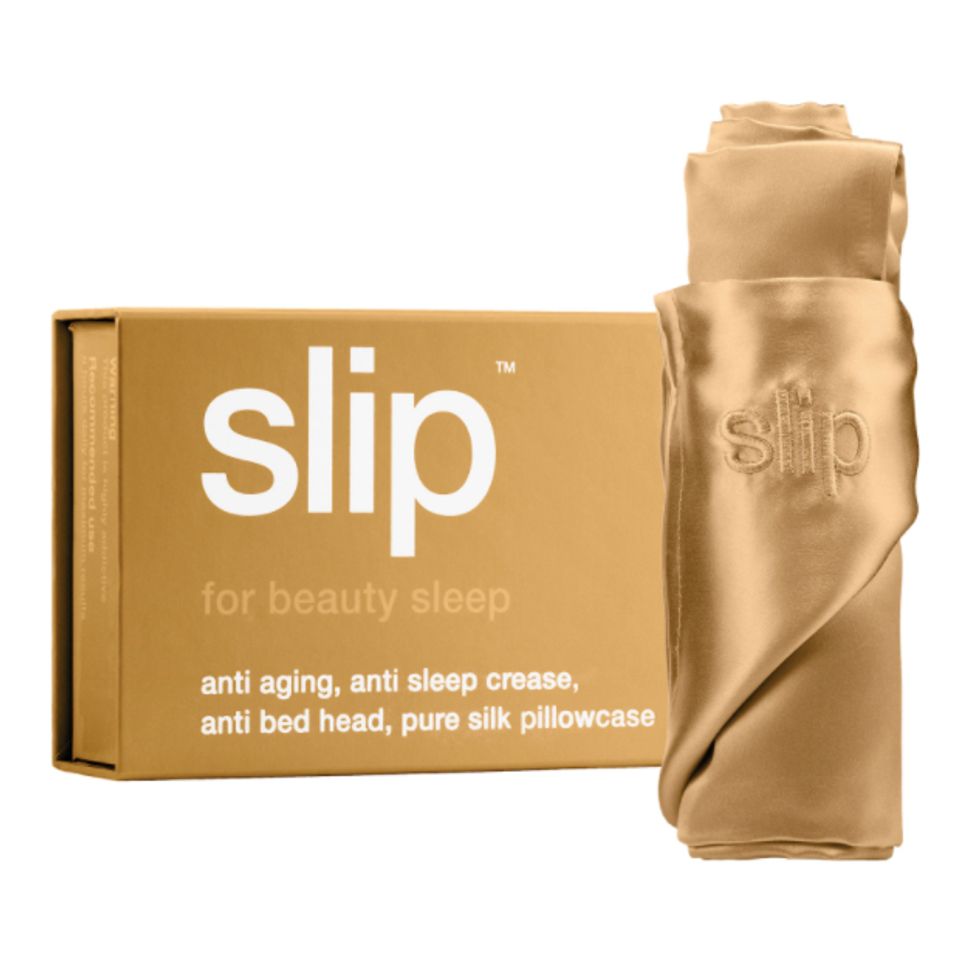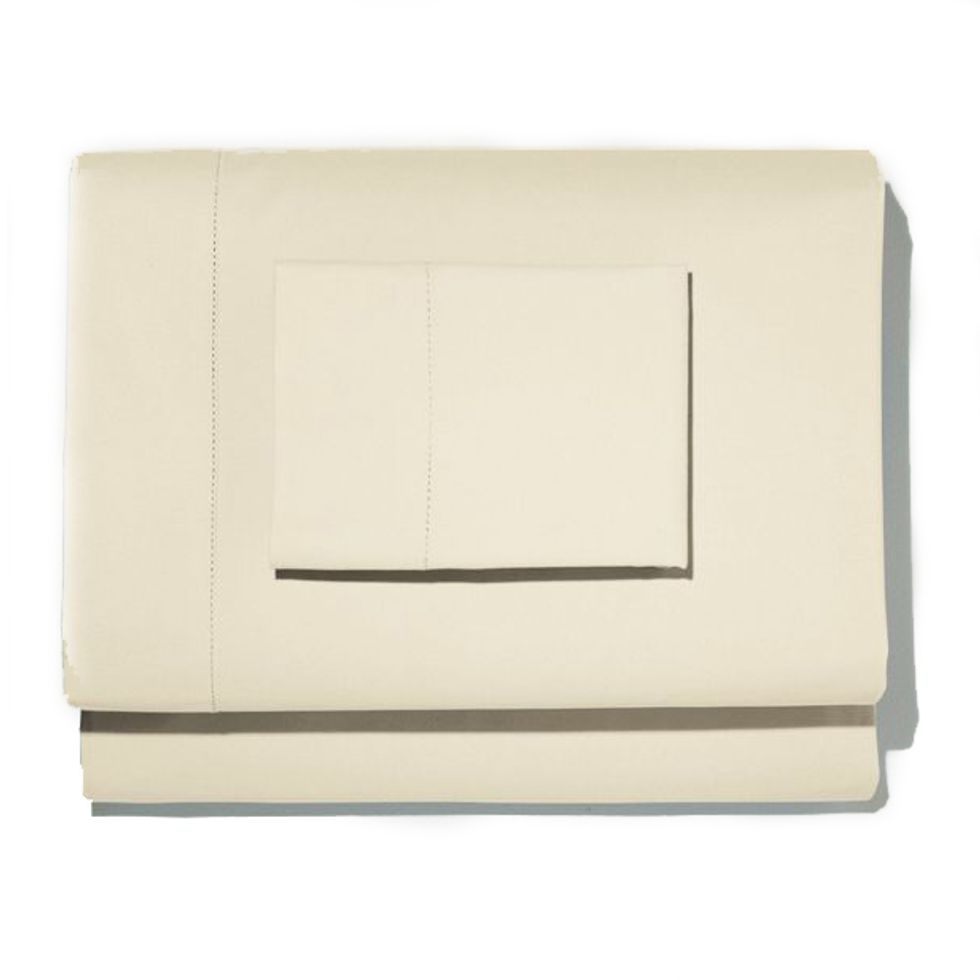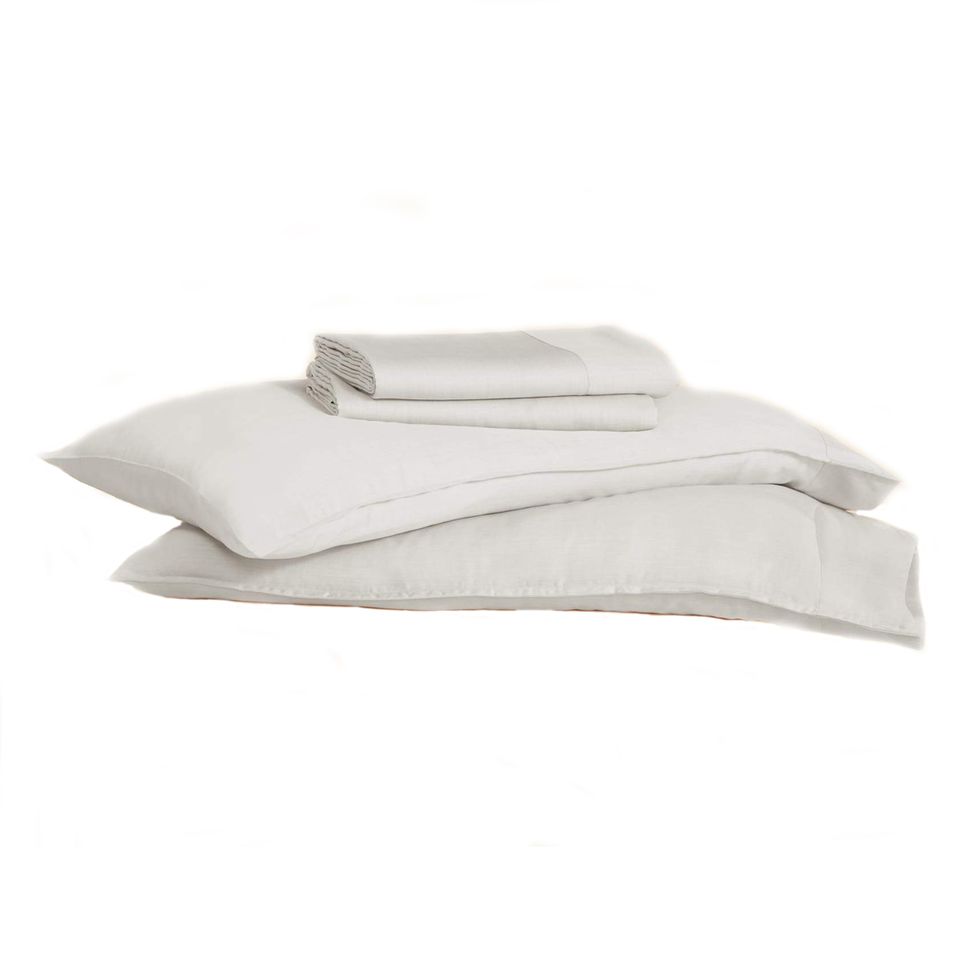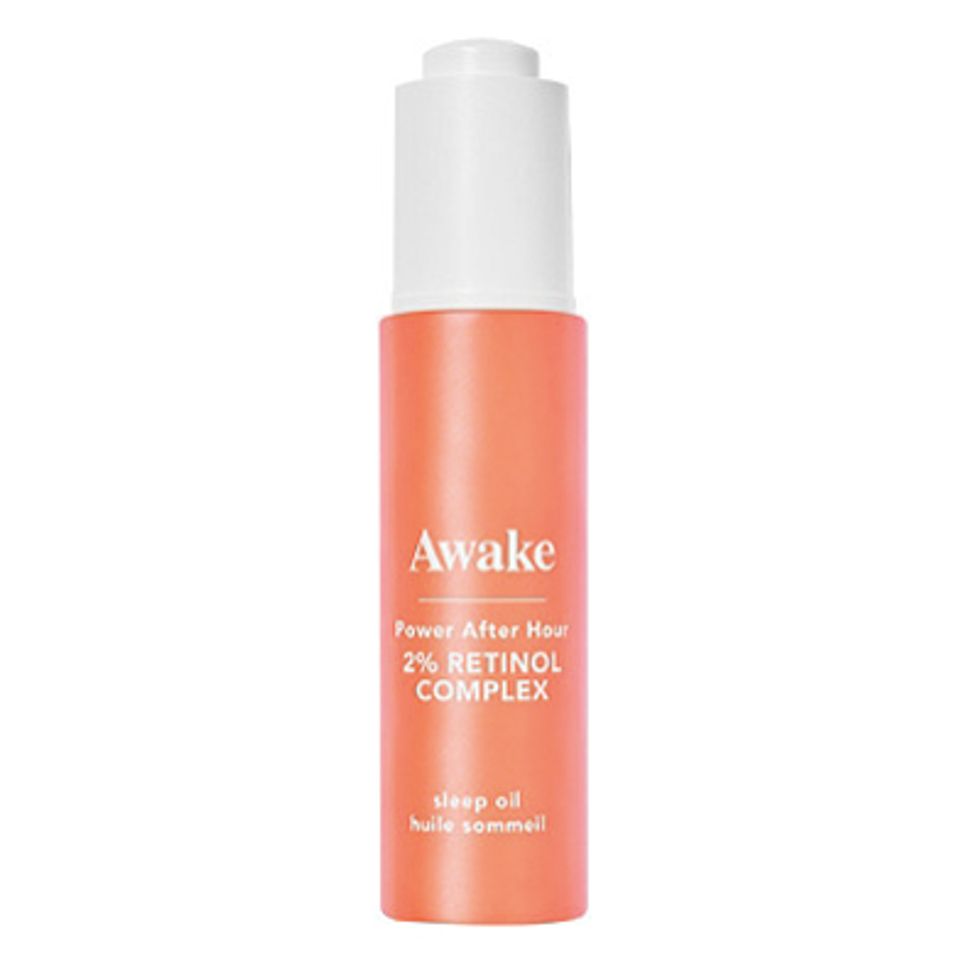Skin
The Way You Sleep Is Probably Damaging Your Skin
Don’t worry—we consulted the experts for advice.

30 April, 2020
10 November, 2021
Getting better sleep is high on our list of priorities lately, but even as we learn all the different ways of improving the quality or making our bedrooms more conducive to rest, we still haven’t been paying enough attention to the way sleep affects our skin. Or rather, how we sleep. Aside from the occasional bout of tossing and turning through the night, most of us have our preferred position—on our back, stomach, or side. Like it or not, one of those is superior to the others when it comes to your skin’s health (hint: it’s not facedown), but what exactly is happening between the time we go to bed and when we wake up in the morning?
“Most patients understand the importance of getting enough sleep each night and the effect ample sleep can have in improving skin tone, texture, and appearance,” says double board-certified plastic surgeon Dr. Konstantin Vasyukevich of Facial Plastic & Reconstructive Surgery. “What is less readily known is how the positions we sleep in affect anti-aging efforts.” What we all need to understand is that staying horizontal for any length of time, like sleeping, causes a major shift within the body. The balance of fluid distribution will move towards your upper body, which is why we look so damn puffy when we wake up. Luckily, this sort of puffiness disappears after a short period of time (even faster if you commit to a consistent facial massage routine), but Dr. Vasyukevich does stress that this sort of cyclical swelling, and the daily expansion and contraction of the facial tissue, puts a strain on the ligamentous support of the face. “It may eventually lead to stretching and sagging associated with an aged appearance.”
Okay, so “beauty sleep” might be a misnomer here, but there are several strategies you can apply to ensure you’re not further exacerbating this type of skin aging. Dr. Morgan Rabach, board-certified dermatologist and co-founder of LM Medical NYC, explains why you should try to sleep on your back, even if it’s not your favorite. “It lets your blood evenly flow into your skin and to prevent what we call ‘dependent’ edema or swelling that collects in a gravity-dependent way. Sleeping on your back also lets your dead skin cells ‘shed’ evenly across your face versus one side more than the other. You get fewer wrinkles on your neck, [and] sleeping on your back also allows your night cream to soak into your face instead of the pillowcase.”
Stomach sleepers, sorry to tell you this, but you’re most at risk of damaging your skin. Dr. Vasyukevich continues, “This position tends to create a larger accumulation of fluid under the eyes, meaning increased puffiness, and places your face under increased pressure during the night.” That pressure can lead to more fine lines and wrinkles developing earlier than if you were to snooze on your back.
Similarly, side sleepers will see more wrinkling on their left or right side—whichever side you sleep on most often—because of the movement of the facial skin against the pillow. You’ll know that’s happening because of those tell-tale pillow marks in the morning. “These forces are not significant enough to noticeably stretch the skin overnight; however, when this process continues every night over an extended period of time, it can lead to additional damage to the tissue-supporting mechanism and result in an aged appearance of the face.”
Unfortunately, there’s no magical way for you to train yourself to change your sleeping position—just do your best to stay on your back while you’re still awake and hope for the best. Practice makes perfect. But Dr. Rabach does have a few tips for the best way to prevent excessive skin damage during the night, no matter how you fall asleep: “Clean your pillowcase. If you are someone that has puffy eyes when you wake up, elevating your head with two pillows may help.” She’s a fan of silk and cotton pillowcases—the former is hypoallergenic and resistant to dust mites, and the latter is non-comedogenic and breathable.
“Wash your face before bed, and moisturize your entire face with a thick moisturizer so that even if one side rubs off into the pillow, you still have some on there. Use retinols and creams with antioxidants during the night, which is the best time to let your skin repair and regenerate. And leave a cup of water by your bed to keep yourself hydrated overnight.” Hear that? A nighttime skin-care routine is a must.
Above all, make sure you’re getting at least seven to eight hours of sleep every night, because no matter how you do it, you and your skin need the rest.
“Most patients understand the importance of getting enough sleep each night and the effect ample sleep can have in improving skin tone, texture, and appearance,” says double board-certified plastic surgeon Dr. Konstantin Vasyukevich of Facial Plastic & Reconstructive Surgery. “What is less readily known is how the positions we sleep in affect anti-aging efforts.” What we all need to understand is that staying horizontal for any length of time, like sleeping, causes a major shift within the body. The balance of fluid distribution will move towards your upper body, which is why we look so damn puffy when we wake up. Luckily, this sort of puffiness disappears after a short period of time (even faster if you commit to a consistent facial massage routine), but Dr. Vasyukevich does stress that this sort of cyclical swelling, and the daily expansion and contraction of the facial tissue, puts a strain on the ligamentous support of the face. “It may eventually lead to stretching and sagging associated with an aged appearance.”
Okay, so “beauty sleep” might be a misnomer here, but there are several strategies you can apply to ensure you’re not further exacerbating this type of skin aging. Dr. Morgan Rabach, board-certified dermatologist and co-founder of LM Medical NYC, explains why you should try to sleep on your back, even if it’s not your favorite. “It lets your blood evenly flow into your skin and to prevent what we call ‘dependent’ edema or swelling that collects in a gravity-dependent way. Sleeping on your back also lets your dead skin cells ‘shed’ evenly across your face versus one side more than the other. You get fewer wrinkles on your neck, [and] sleeping on your back also allows your night cream to soak into your face instead of the pillowcase.”
Stomach sleepers, sorry to tell you this, but you’re most at risk of damaging your skin. Dr. Vasyukevich continues, “This position tends to create a larger accumulation of fluid under the eyes, meaning increased puffiness, and places your face under increased pressure during the night.” That pressure can lead to more fine lines and wrinkles developing earlier than if you were to snooze on your back.
Similarly, side sleepers will see more wrinkling on their left or right side—whichever side you sleep on most often—because of the movement of the facial skin against the pillow. You’ll know that’s happening because of those tell-tale pillow marks in the morning. “These forces are not significant enough to noticeably stretch the skin overnight; however, when this process continues every night over an extended period of time, it can lead to additional damage to the tissue-supporting mechanism and result in an aged appearance of the face.”
Unfortunately, there’s no magical way for you to train yourself to change your sleeping position—just do your best to stay on your back while you’re still awake and hope for the best. Practice makes perfect. But Dr. Rabach does have a few tips for the best way to prevent excessive skin damage during the night, no matter how you fall asleep: “Clean your pillowcase. If you are someone that has puffy eyes when you wake up, elevating your head with two pillows may help.” She’s a fan of silk and cotton pillowcases—the former is hypoallergenic and resistant to dust mites, and the latter is non-comedogenic and breathable.
“Wash your face before bed, and moisturize your entire face with a thick moisturizer so that even if one side rubs off into the pillow, you still have some on there. Use retinols and creams with antioxidants during the night, which is the best time to let your skin repair and regenerate. And leave a cup of water by your bed to keep yourself hydrated overnight.” Hear that? A nighttime skin-care routine is a must.
Above all, make sure you’re getting at least seven to eight hours of sleep every night, because no matter how you do it, you and your skin need the rest.
Shop the Story:
Photo: Shot on site at 6 Columbus, a Sixty Hotel. On Solveig: Pajamas, Morgan Lane; Rings, Azlee, Baker & Black; Hair, Angela Soto; Makeup, Andriani.
Want more stories like this?
How to Get Better, Deeper, Longer Sleep
5 Easy Ways to Get More Sleep This Spring
Dry Brushing Is Our Secret for Softer, Smoother Skin
Want more stories like this?
How to Get Better, Deeper, Longer Sleep
5 Easy Ways to Get More Sleep This Spring
Dry Brushing Is Our Secret for Softer, Smoother Skin










